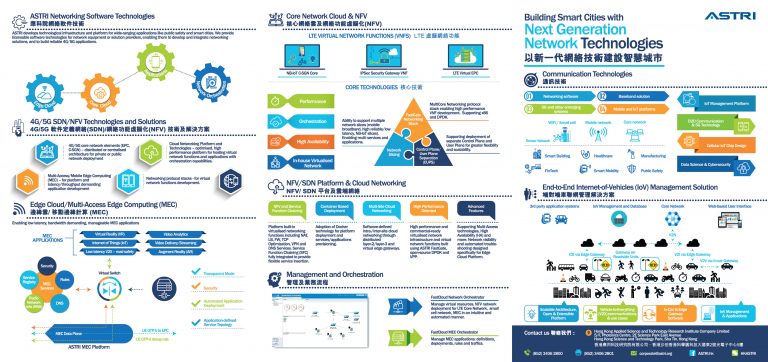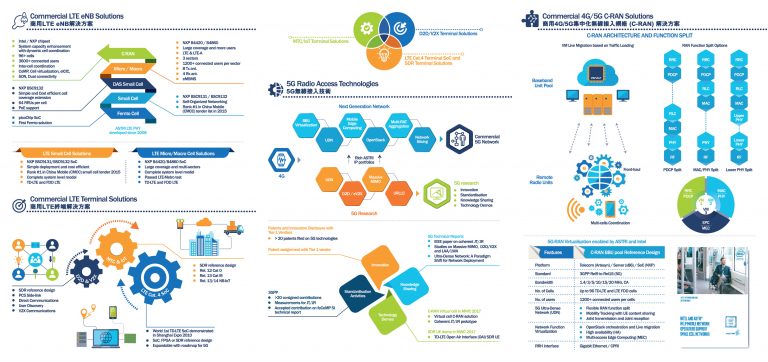Please click below to view the details:
Next Generation Network
Smart Indoor and Outdoor Geographic Information System
The Internet of Things (IoT) is the next evolution of the internet after the mobile internet. While BLE (or next generation of communication technologies such as Lora/NB-IoT) and GPS are well-suited technology to build up IoT applications and systems, integrated indoor and outdoor GIS systems are critical to realize the potential of IoT. This will impact the operation of society in a large scale paving the next wave of innovations and economic activities.
A major challenge of GIS systems is scalability during large scale deployment. The software would need to accommodate tremendous amount of networking traffic triggered by millions of devices and mobile users. Message queue technology is used to address the scalability issue of the cloud for massive loading. In addition, it could also be used to increase the network bandwidth efficiency for IoT data.
In order for GIS systems to be useful in the IoT context, this system consolidate both indoor and outdoor information in a seamless presentation. These information come from various different sources; outdoor information come from GPS or A-GPS, and indoor information usually come from BLE, Wi-Fi, and magnetic measurements. Also, the system has an interface to big data analytic platforms such as Hadoop.
The system is capable to manage multi-site geo-locations, massive users and IoT devices, and also real time proximity and IoT sensors data. The associated security and access right control of the system have also been developed.
Finally, trials will be deployed in Kowloon East to demonstrate the developed technologies. Know-how and technology in the area of scalable indoor and outdoor GIS will also be transferred to related government departments.
Evolved Packet Core (EPC)
ASTRI’s has developed 3GPP standard compliant Evolved Packet Core software. EPC is the core network component in LTE networks. The innovative architecture enables high degree of flexibility in deployment and scalability, which allows adaptations to suitable application scenarios, including evolution towards Software Defined Network (SDN) enabled LTE networks in the future.
Key Features and Benefits
Mobility Management Entity (MME)
- UE mobility and session management, NAS security, authentication, tracking area list management, handover (S1, X2), paging, etc.
- Embedded HSS/PCRF (N/A if billing enabled)
- Redundancy: N+1
Packet Gateways (SGW and PGW)
- Mobility anchor, per-user packet filtering, packet forwarding, dedicated bearers, rate enforcement
- (AMBR, MBR), accounting (usage records), IPv4, IPv6, IPv4/v6, etc.
- Configuration option: SGW and PGW can be combined (for small networks) or separated by configuration
- Redundancy: 1+1
System Management
- CLI/Telnet management console
- HTTP web interface System Management for hardware, blades, chassis, redundancy management, etc.
- Service Management for EPC software services, network configurations, etc.
- Hardware and Software Platforms
- ASTRI’s EPC software can run on various platforms:
- Control Plane Processor
- Intel x86 based
- OS: Redhat Linux or Carrier Grade Windriver Linux
Data Plane Processor
- Cavium 58xx or 68xx based
- OS: Cavium Simple Executable + Cavium Linux/Carrier Grade Windriver Linux
Internet of Things Management and Application Platform with Boardband Wireless
This project developed an Internet of Things (IoT) Management and Application Platform (IMAP). The IMAP enabling solutions are missing or only in prototype quality (i.e. not reliable, not scalable, and lack of security).
Every street light is a standalone entity with its own solar panel and battery (i.e. no wires attached) and thus cannot be controlled and monitored remotely. Using wireless sensor network (WSN) technologies, the solar street lights can form a local area sensor network. With an IoT gateway device and the wireless broadband access such as LTE, the solar street lights can be managed and controlled remotely by the IoT management platform. The direct benefits of the IoT management platform would be the capability to monitor the street light components (such as solar panel, batteries, power, current etc) and to control the street lights (for examples, on/off, dimming etc) remotely.
In addition, the IoT solution can bring impacts in terms of energy savings, low construction cost, environment protection and low operational and maintenance cost. In fact, when this project is completed, similar applications such as environment monitoring, video surveillance, river management, water quality monitoring etc can be developed quickly once the interested industry partners are identified.
The project deliverables are:
i)a commercial IoT gateway and management platform to provide management capability to different types of IoT devices flexibly and reliably;
ii)Application solution: solar/wind powered device management applications (solar street light management and green energy device management).


